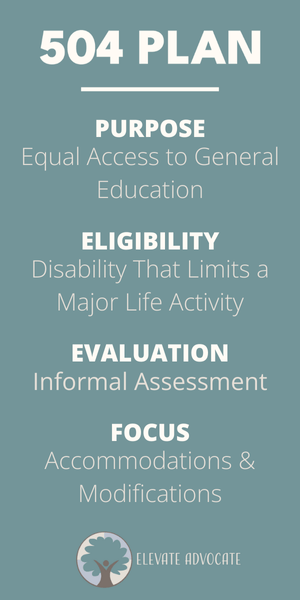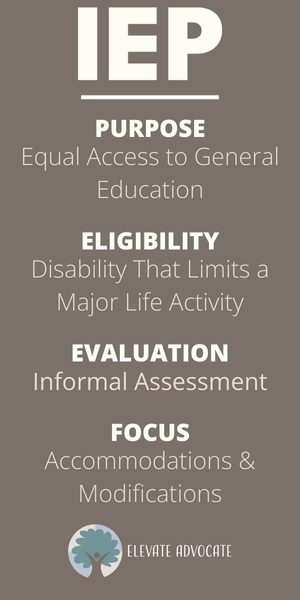When it comes to supporting students with disabilities, schools use two important systems: 504 Plans and Individualized Education Programs (IEPs). While both ensure students have the opportunity to succeed in school, they differ in eligibility, scope, and the type of support they provide. Understanding these differences can help parents, educators, and students make informed decisions about the best support system for a child’s unique needs.

What Is a 504 Plan?
A 504 Plan comes from Section 504 of the Rehabilitation Act of 1973, which prohibits discrimination against individuals with disabilities in federally funded programs. The main purpose of a 504 Plan is to give students with disabilities equal access to education in the general classroom setting.
Unlike IEPs, 504 Plans do not typically include specialized instruction. Instead, they focus on accommodations and modifications that help students participate fully alongside their peers.
Eligibility for a 504 Plan
To qualify, a student must have a physical or mental impairment that significantly limits one or more major life activities, such as:
- Learning
- Walking
- Seeing
- Hearing
Eligibility is not limited to specific disability categories. Schools typically determine eligibility through an informal evaluation conducted by a 504 team (teachers, administrators, and other professionals).
Examples of 504 Accommodations
- Extended Time on Assignments or Tests
- Preferential Seating
- Assisstive Technology
- Modified Assignments

What Is an IEP?
An Individualized Education Program (IEP) is governed by the Individuals with Disabilities Education Act (IDEA). Unlike a 504 Plan, an IEP is designed to provide specialized instruction and services tailored to a child’s specific educational needs.
An IEP outlines individualized goals and measurable objectives tailored to a student’s unique strengths and challenges. It may include specialized instruction, related services such as speech or occupational therapy, and accommodations that support both academic and functional growth. The plan is developed collaboratively by parents, teachers, and specialists, ensuring the student receives the resources and support needed to thrive in school.
Eligibility for an IEP
To qualify, a student must meet IDEA’s eligibility criteria. These may include:
- Intellectual Disability
- Hearing or Vision Impairment
- Speech or Language ImpairmentList Item
- Emotional or Language Disability
- Orthopedic Impairment
- Autism
- Traumatic Brain Injury
- Specific Learning Disability
- Other Health Impairments
Eligibility requires a formal evaluation by a multidisciplinary team that includes teachers, specialists, and parents.
What an IEP Provides
An IEP is built around individualized goals and objectives. These address academic and functional skills while setting measurable progress targets. An IEP may also include:
- Specialized Instruction (individual or group)
- Speech Therapy, Occupational Therapy, or Counseling
- Related Services to Support Educational Needs
- Annual Progress Reviews and Adjustments
Because of its individualized nature, an IEP requires more ongoing collaboration between parents, teachers, and specialists compared to a 504 Plan.
Which Is Right for Your Child?
Both 504 Plans and IEPs play a vital role in supporting students with disabilities. While a 504 Plan ensures equal accessto the general curriculum, an IEP provides specialized instruction and tailored support.
👉 If you’re unsure which option fits your child best, you don’t have to figure it out alone.
At Elevate Advocate, we walk alongside families, helping them understand eligibility, prepare for school meetings, and ensure their children receive the support they deserve.
📞 Call us today at 727-835-5046
🌐 Learn more about our IEP and 504 advocacy support
💡 Or discover our mission to see how we empower families every day.
